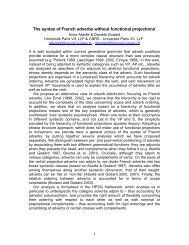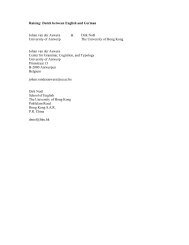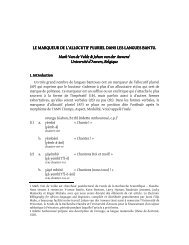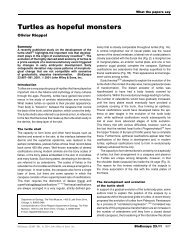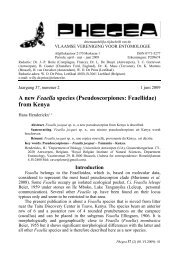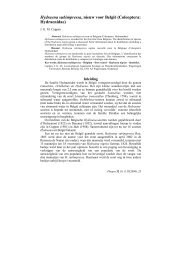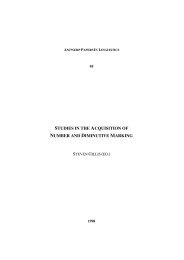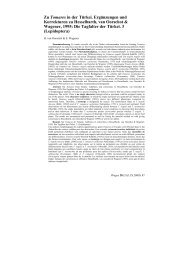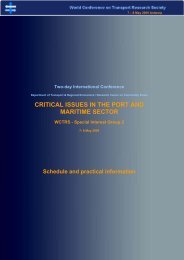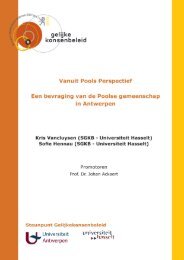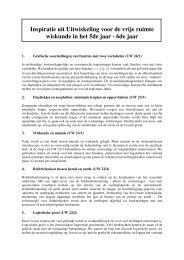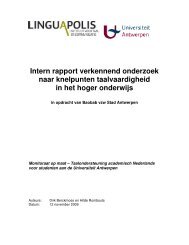Theodor2005.pdf
Theodor2005.pdf
Theodor2005.pdf
You also want an ePaper? Increase the reach of your titles
YUMPU automatically turns print PDFs into web optimized ePapers that Google loves.
Cebochoerid Deciduous Dentitions 173<br />
dP2: This tooth is only preserved in the specimens of Acotherulum. The tooth crown is<br />
buccolingually narrow and trenchant, with a reduced parastyle. The paracone is the largest<br />
cusp on the roughly triangular crown, with a smaller metacone immediately distal to it.<br />
Distolingual to the metacone is a small barely observable basin, with a small postcingulum.<br />
There is no protocone.<br />
dP3: The crown is complex and triangular, with a large blunt parastyle. Posterior to<br />
the parastyle the trigon is formed by a large blunt paracone and metacone buccally and a<br />
smaller protocone lingually. There is a small paraconule distolingual to the paracone, and a<br />
small ectocingulum is restricted to the distobuccal portion of the metacone and distal edge<br />
of the protocone. In the specimens of Cebochoerus the cingulum is continuous around the<br />
protocone, metacone and the valley separating the two cusps; in Acotherulum, the cingulum<br />
is discontinuous, present only around the bases of the cusps. There is a wide precingulum in<br />
Qu7075 and Qu11283, which is not present in LDB107 or Qu11284, showing no consistent<br />
generic difference.<br />
dP4: The dP4 is quadritubercular, resembling the adult molars more than the dp2-3,<br />
as in most artiodactyls. The buccal cusps are conical, joined by a very slight straight<br />
mesiodistal crest. There is a very small paraconule present on MNHN LDB107, but not in<br />
the other specimen of Acotherulum, MNHN Qu7075, and it is absent in the specimens of<br />
Cebochoerus, in contrast to the M1, which for both taxa bears a small paraconule. There<br />
is no mesostyle, but there is a small parastyle, which is larger in Cebochoerus. There is<br />
a narrow, weakly expressed cingulum on the buccal edge of the paracone and metacone.<br />
As in the M1 for Cebochoerus, there is a wide, short precingulum along the protocone of<br />
the dP4, and a wide postcingulum that extends along the entire distal side of the tooth. In<br />
Acotherulum the precingulum is poorly developed and the postcingulum is absent, as in<br />
the M1. The lingual cusps are slightly crescentic, with a very small lingual cusp near the<br />
mesial end of the base of the metaconule, which is somewhat larger in the specimens of<br />
Cebochoerus than in those of Acotherulum.<br />
dp2: This tooth is preserved in two of the cebochoerid specimens we examined,<br />
MNHN.Qu53 (Cebochoerus sp.) and MNHN.EBA327 (C. lautricensis), and is not known<br />
for Acotherulum. Our description is based primarily on EBA327, as it exhibits much less<br />
tooth wear than Qu53.<br />
dp2: dp2 has two roots, and the crown is triangular in outline. The apex of the triangle<br />
forms the main cusp, which is situated above the junction of the two roots. The tooth<br />
bears an anteroposteriorly arranged series of smaller cuspids, giving the crown a serrated<br />
appearance. The main central cuspid, the protoconid, bears a mesiodistally-oriented crest<br />
that continues to both ends of the tooth. Mesial to the protoconid are two smaller cuspids,<br />
a paraconid and a smaller, more mesial cuspate parastylid. Distal and very slightly lingual<br />
to the protoconid is a large hypoconid. It is intermediate in height between the paraconid<br />
and the protoconid. Distal to the hypoconid crest is a small talonid with a buccolinguallyoriented<br />
ectostylid, but EBA 327 has a break in this portion of the tooth. There appears to<br />
be no discrete metaconid on either specimen. There is a small cuspid on the mesiolingual<br />
end of the ectostylid that probably represents the hypoconulid. Buccally, the tooth crown<br />
bears a very faint cingulid, which is absent lingually.<br />
dp3: The dp3 is more complex than the dp2, although the basic morphology is similar.<br />
There is a small cuspate parastylid in most of the specimens, which is especially large on<br />
Qu65, but this part of the tooth is obscured by plaster in EBA327. The protoconid of the



